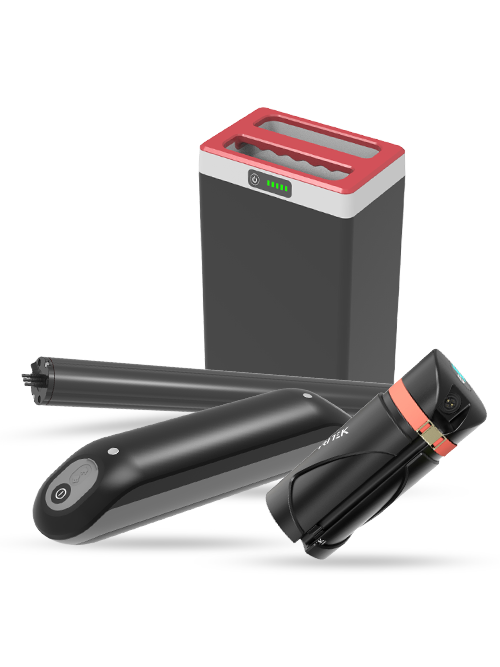In today’s fast-paced technological landscape, the reliability and safety of battery packs are paramount. Whether used in electric vehicles, portable electronics, or industrial applications, batteries must perform consistently under various conditions to ensure the safety and satisfaction of end-users. One critical aspect of ensuring this reliability is through rigorous vibration test.
What is Vibration Test?
Vibration test is a process used to evaluate the durability and robustness of battery packs by exposing them to controlled vibrational forces. This testing mimics the mechanical stresses that batteries experience during shipping, handling, and operational use, ensuring they can withstand these conditions without failure.
Types of Vibration Tests
Sinusoidal Vibration Testing: Involves applying harmonic (sinusoidal) vibrations at specific frequencies to identify resonant frequencies and assess structural integrity.
Random Vibration Testing: Applies a spectrum of frequencies simultaneously to simulate real-world conditions more accurately, often used to predict how batteries will perform in unpredictable environments.
Shock Vibration Testing: Involves subjecting the battery pack to sudden, high-intensity vibrations or impacts to test its resilience to sudden forces, such as drops or impacts during transport.
Battery Vibration Testing Conditions and Methods
1. Testing Conditions
Temperature: Conduct tests at 20°C ± 10°C to ensure that the battery packs are evaluated under standard environmental conditions.
State of Charge (SOC): Adjust the SOC to 50% or more within the normal operating range at the start of the test to simulate typical usage conditions.
Protective Devices: Ensure all relevant protective devices are operational at the start of the test to accurately reflect real-world scenarios and verify the effectiveness of these safety mechanisms.
2. Testing Method
Sinusoidal Vibration: Apply sinusoidal vibration with a logarithmic frequency sweep between 7Hz and 200Hz, returning to 7Hz within 15 minutes. This method helps to identify resonant frequencies and potential weaknesses.
Vibration Direction: Test the battery packs in the vertical axial direction of the installation to simulate the most common orientation during use and transport.
Duration: Repeat the vibration process 12 times, for a total of 3 hours. This extended testing period ensures thorough evaluation of the battery’s durability and reliability.

3. Frequency and Acceleration Correlation
Frequency 7-18Hz: Apply an acceleration of 10m/s² to test the battery’s response to lower frequency vibrations.
Frequency 18-25Hz: Gradually increase the acceleration from 10m/s² to 20m/s² to assess the battery’s performance under mid-range frequencies.
Frequency 25-200Hz: Maintain an acceleration of 20m/s² to test the battery’s resilience to higher frequency vibrations.
Higher Acceleration and Frequency: Use higher acceleration and maximum frequency as per the manufacturer’s requirements to simulate more extreme conditions and ensure robust performance.

4. Post-Test Observation
Observation Period: Observe the sample for 1 hour after the test to check for any delayed effects or issues that may arise after the vibration exposure.
Functionality Check: Perform one standard cycle to verify the battery’s functionality and ensure that it continues to operate correctly after the test.
5. Criteria for Pass/Fail
Pass Criteria: The battery pack must not exhibit any electrolyte leakage, cracking, fire, or explosion. Meeting these criteria ensures that the battery pack remains safe and functional after being subjected to vibration testing.


Equipment Used for Battery Vibration Testing
Vibration Test System: Includes shakers, controllers, and fixtures to secure the battery pack during testing.
Data Acquisition Systems: Used to monitor and record the test data, including vibration frequencies, accelerations, and any deviations.
Environmental Chambers: To control the temperature and humidity conditions during testing, ensuring accurate and consistent results.
Importance of Vibration Testing in Battery Packs
Safety Assurance
Ensuring the Structural Integrity of Battery Packs: Vibration testing helps identify any weaknesses or defects in the battery pack’s construction that could lead to structural failures. By subjecting the batteries to controlled vibrational forces, manufacturers can detect and address potential issues before the products reach consumers.
Prevention of Potential Failures and Hazards: Through vibration testing, manufacturers can prevent failures such as leaks, cracks, or electrical malfunctions that could pose safety risks like fires or explosions. This proactive approach ensures that only safe and reliable battery packs are released to the market.
Performance Reliability
Maintaining Performance Under Different Environmental Conditions: Vibration testing ensures that battery packs can maintain their performance when exposed to various environmental conditions, such as during transportation over rough terrain or in machinery that generates constant vibrations. This testing verifies that the battery packs will perform reliably in real-world applications.
Ensuring Consistent Energy Output and Lifespan: By confirming that battery packs can withstand vibrations without performance degradation, manufacturers ensure that their products deliver consistent energy output and maintain a long lifespan, providing value and reliability to customers.
Compliance and Certification
Meeting International Safety and Performance Standards: Vibration testing is often a requirement for meeting international safety and performance standards. By rigorously testing their products, manufacturers can ensure compliance with standards such as CE, FCC, UL2271, UN 38.3 and others.
Importance for Gaining Certifications: Achieving these certifications is crucial for market acceptance and regulatory approval. It demonstrates to customers and regulators that the battery packs have been thoroughly tested and meet stringent safety and performance criteria, enhancing trust and credibility in the brand.
Conclusion
Battery vibration testing is essential for ensuring the reliability, safety, and performance of battery packs. It helps identify and mitigate potential weaknesses, ensuring that batteries can withstand real-world conditions without failure.
Businesses looking for high-quality battery packs can trust Tritek to deliver products that have undergone rigorous vibration testing and meet stringent international standards. Our commitment to quality and safety makes us a reliable partner in the battery industry.
Reach out to Tritek today to request a quote or discuss how we can support your business with our reliable and certified battery packs.
FAQ
What is the fatigue damage spectrum in battery testing?
The fatigue damage spectrum assesses the long-term durability of battery systems. By analyzing this spectrum, we can predict and prevent fatigue damage, ensuring the longevity and reliability of lithium-ion and EV batteries.
What types of vibration test profiles are used for lithium-ion batteries?
Vibration test profiles for lithium-ion batteries typically include sine sweep and random vibration tests. These profiles help simulate real-world conditions to ensure the battery’s durability and reliability. Physical testing with these profiles helps identify any potential issues before the batteries are used in applications like electric vehicles.
How are high channel count systems used in testing electric vehicle (EV) batteries?
High channel count systems are utilized to conduct multiple tests on EV batteries, allowing for the collection of extensive data simultaneously. These systems are essential for accurately capturing the performance and durability of electric vehicle batteries during physical testing, including vibration test profiles and shock response spectrum analysis.



